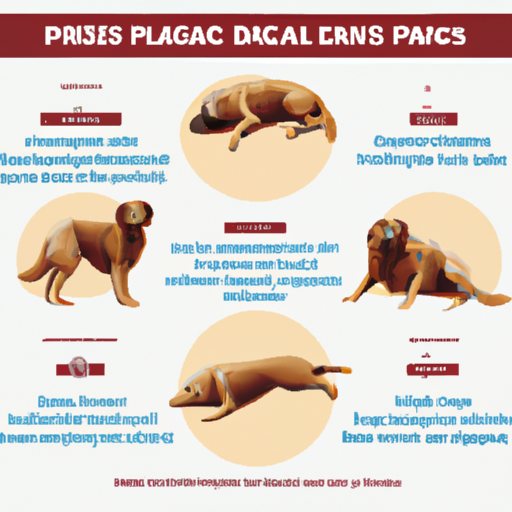As a caregiver, understanding your dog’s health condition can be a challenging task. Sometimes, the signs are not so obvious, and the health deterioration might be happening right under your nose. This guide will help you identify the five physical signs of impending death in dogs, so you can provide the necessary care and support during their final days.
1. Loss of Appetite
One of the most common signs of impending death in dogs is a significant loss of appetite. This is because their body systems are slowly shutting down, and they no longer have the strength or desire to eat.
- What it looks like: Your dog may refuse its favorite treats or show little interest in its meals.
- What you can do: Try tempting them with their favorite foods or hand-feeding them. If they still refuse, it’s crucial to consult your vet.
2. Lack of Energy and Increased Sleep
A dying dog will often show a decrease in activity and increase in sleep. This is a natural part of the dying process as their body is using less energy.
- What it looks like: You might notice your dog sleeping most of the day and showing little enthusiasm for walks or play.
- What you can do: Allow them to rest and provide a comfortable space for them to sleep.
3. Changes in Behavior and Appearance
As your dog’s health declines, you may notice significant changes in their behavior and appearance.
- What it looks like: Your dog may exhibit unusual aggression, confusion, or isolation. Their coat may lose its shine, and they might lose significant weight.
- What you can do: Continue to provide love and comfort. Consult your vet for any sudden behavioral changes.
4. Difficulty Breathing
Towards their end of life, dogs may experience difficulty breathing. This can be due to fluid build-up in the lungs or a failing heart.
- What it looks like: You may notice a change in your dog’s breathing pattern, such as panting, gasping, or shallow breathing.
- What you can do: Keep them comfortable and avoid any strenuous activity. Consult your vet immediately if you notice signs of respiratory distress.
5. Loss of Bladder and Bowel Control
As death approaches, dogs may lose control over their bladder and bowel function.
- What it looks like: Your dog may have frequent accidents indoors or show difficulty in getting up to go outside.
- What you can do: Provide easy access to outdoors and keep their bedding clean and dry.
| Signs | What It Looks Like | What You Can Do |
|---|---|---|
| Loss of Appetite | Refusal of food and treats | Consult your vet |
| Lack of Energy | Increased sleep, less activity | Provide a comfortable space |
| Changes in Appearance and Behavior | Weight loss, aggression, isolation | Consult your vet |
| Difficulty Breathing | Panting, gasping, shallow breathing | Consult your vet |
| Loss of Control | Frequent indoor accidents | Keep their area clean |
FAQs
Q1: Should I consult a vet even if I see one sign?
Yes, it’s always better to consult with a vet if you notice any changes in your dog’s behavior or health.
Q2: Will my dog be in pain?
Many dogs experience pain in their final days, but a vet can prescribe medication to make them comfortable.
Q3: What can I do to comfort my dying dog?
Provide a comfortable space, keep them hydrated, and shower them with love and attention.
Q4: Should I consider euthanasia?
Euthanasia is a personal decision that you should discuss with your vet. It can be a compassionate choice if your dog is suffering.
Remember, you know your dog best. If you notice any of these signs, it’s crucial to consult with a vet. Your love and care can make their final days as comfortable as possible.



